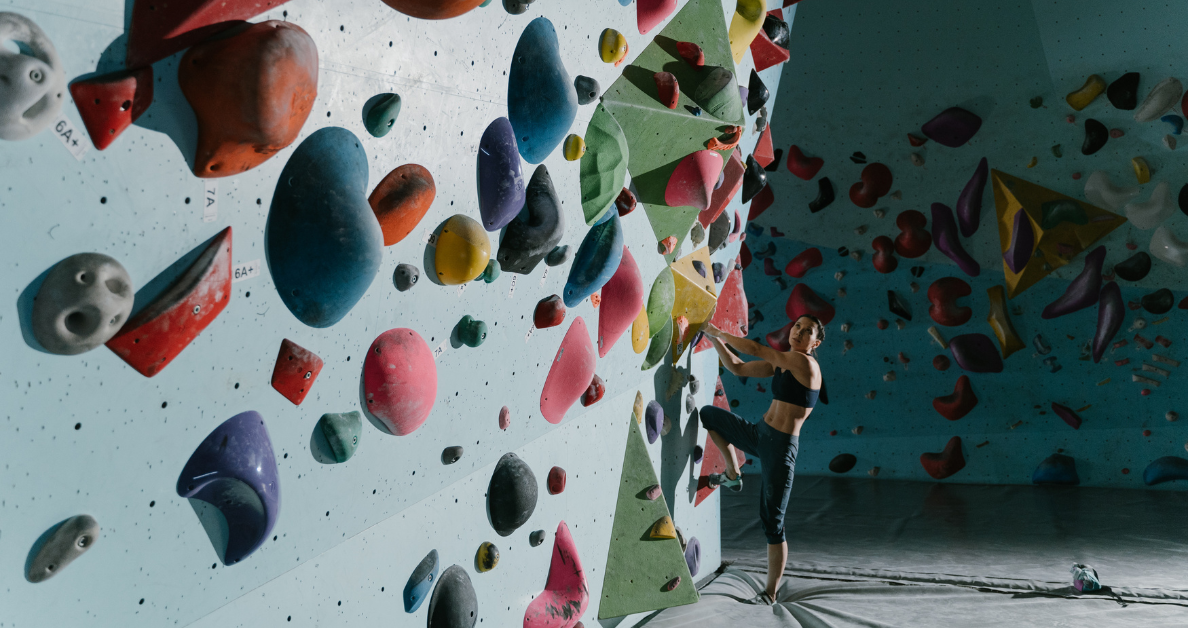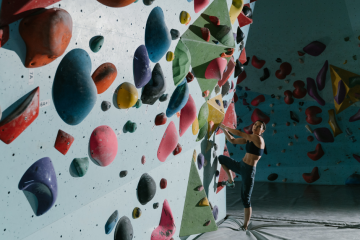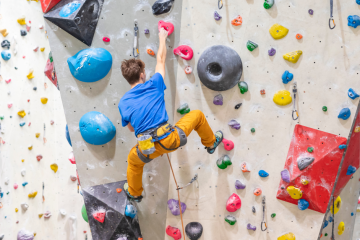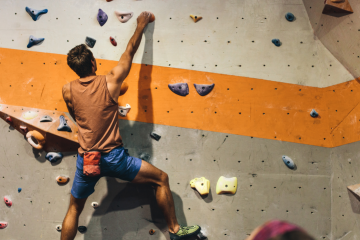
What is bouldering: How to get started
Bouldering is one of the newest forms of climbing, and it has quickly become a favorite.
One of the best things about bouldering is it requires very little know-how, which means anyone can get involved without too much effort.
So, if you’re new to climbing and want to know more about bouldering, don’t go anywhere.
This article will explain everything you need to know and how to get started.
What Is Bouldering?
Bouldering is a form of rock climbing without rope and harness and with very little prior knowledge.
Some climbers regard it as climbing in its simplest form, and they wouldn’t be wrong. But the thing with bouldering is the moves can be pretty advanced.
The lack of equipment allows the climber to focus on their moves, probably why it was used as a warm-up for trad climbing.
Bouldering outside usually involves scaling boulders, generally around 6 meters or lower. After that, you’re starting to push into the highball bouldering territory.
The only thing to keep you safe while bouldering is a few mats at the bottom of the boulder and, hopefully, a friend to guide your fall.
And bouldering hasn’t just taken the world by storm outdoors; it’s also taken the indoor world by storm.
Thanks to the low height required to set up a bouldering wall, more and more gyms that solely offer bouldering have opened.
Bouldering Vs. Rock Climbing: What’s The Difference
If you’re new to climbing, you might not really understand the difference between rock climbing and bouldering.
And that’s fine.
In this section, I’m going to break down the two main differences you’ll find between the two.
In my opinion, there are two main factors:
- The equipment you use
- And the risk and injury involved
Let me explain a little further:
The Equipment
One of the most noticeable differences between bouldering and rock climbing is the equipment you need to use.
You’ll typically see that bouldering requires much less gear when you compare it to trad climbing, sport climbing, or even top roping.
When you’re rock climbing outside, you’re going to need the bare minimum of a:
- Rope
- Harness
- Helmet
- Belay
- Quickdraws
- Carabiners
- Slings
- And much more
And that’s just for sport climbing; if you’re a tradster, you will need to include much more gear than that.
But…
With bouldering, you’re going to require a lot less gear. At the most, you’re going to need…
- Climbing shoes
- Chalk bag
- Crash mat (maybe several, depending on where you’re climbing)
… And that’s about it. So, as you can see, bouldering requires a lot less equipment, which makes it more appealing for newcomers to the sport.
The Risk And Injury Involved
Another difference you should consider when comparing the two sports is the risk and injury involved. And, understandably, you want to know which is the riskier if you’re getting started.
So, let’s break it down:
On the face of it, it’s hard to distinguish which one involves the most risk. On the one hand, you have the height associated with rock climbing, but you do have a rope.
On the other hand, you have bouldering, where you’re not climbing high, but you have a 100% chance that you will hit the floor. And even with a crash mat, that involves a certain amount of risk.
When it really comes down to it, the chances of death are extremely low with either rock climbing or bouldering.
Although, through research, there are many more confirmed deaths when it comes to rock climbing. In fact, I couldn’t find a report of any death from bouldering, so make of that what you will.
With that being said, you might not be likely to die from bouldering, but you are more likely to have minor injuries. It’s very common for injuries like sprains, bruised bones, and even broken limbs if you’re not careful or climb without a spotter.
The problem with rock climbing is that accidents can quickly become fatal. Incorrectly placed gear, running out the rope, human errors and gear failure can all lead to death.
So, it’s essential to consider the risks and weigh the rewards independently.
How To Fall Correctly Fall When Bouldering
In an earlier section, I mentioned the risk of bouldering due to the 100% chance of hitting the floor.
And because of this, you run the risk of breaking limbs if you don’t fall correctly, so in this section, I will teach you how to fall correctly.
Ideally, you should climb down, but this isn’t always possible. To make things worse:
Falling correctly is a skill in itself, and it requires some practice if you want to do it safely and without injury.
One of the most important things to remember is to try not to catch on to the climbing holds as you fall to slow yourself down. Just accept that you’re going to fall, stay engaged for the landing (but not stiff), and get ready for the landing.
Your knees, when possible, will absorb most of the shock if done correctly. This means landing flat feet and bending your knees as your feet hit the mat. As your knee collapses, continue your fall by rolling onto your back.
One of the most important things here is not to put your hands on the mat; it’s the quickest way to break your wrists.
Another top tip is not to try to stick the landing; this isn’t a gymnastics competition, and you won’t get marked down for rolling onto your back.
And finally, tuck your chin into your chest to avoid whiplash on big falls. Remember, this is just for indoor bouldering, but some of these tactics cross over to outdoor bouldering.
Top Tip: Make sure you’re climbing with a spotter when you’re climbing outside; they can help guide you to a safe location when you’re falling.
Here’s a great video you can watch that features some demonstrations:
https://www.youtube.com/watch?v=Qc7ZQHE9L9w
Final Thoughts & Takeaways
From where I stand, bouldering isn’t just about flexing muscles; it’s a full-package deal that throws strength, agility, and mental sharpness into the mix.
It’s all about keeping it simple—navigating rocks with minimal gear and solving problems on the fly. But it’s not just about the physical grind; bouldering creates a solid community of climbers.
Unlike traditional rock climbing, bouldering ditches the safety gear, ramping the focus on precise moves and packing intensity into each climb.









